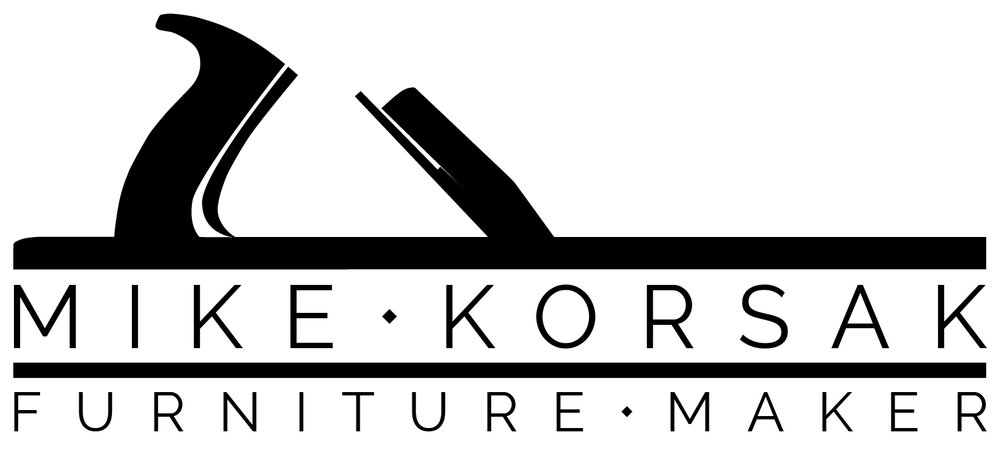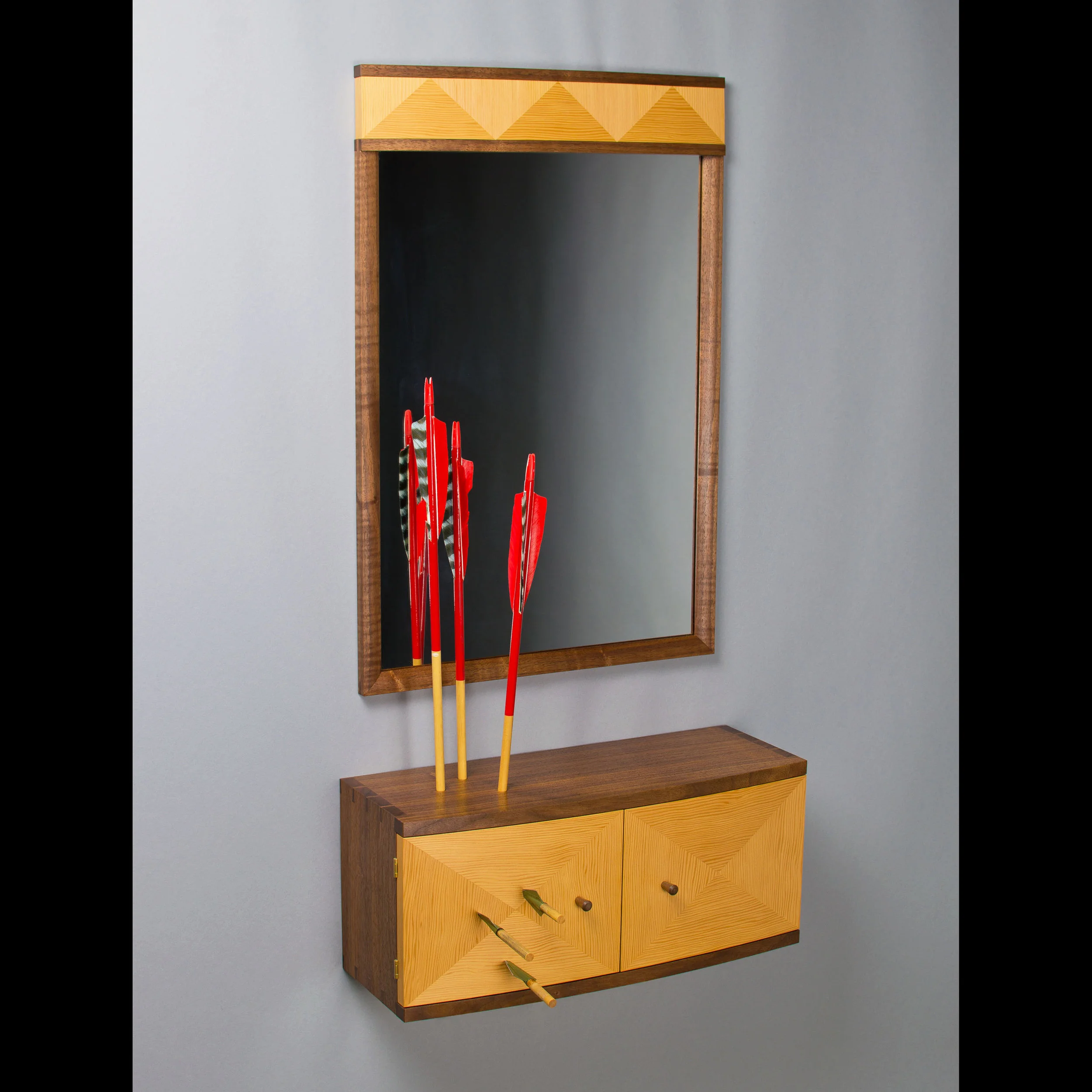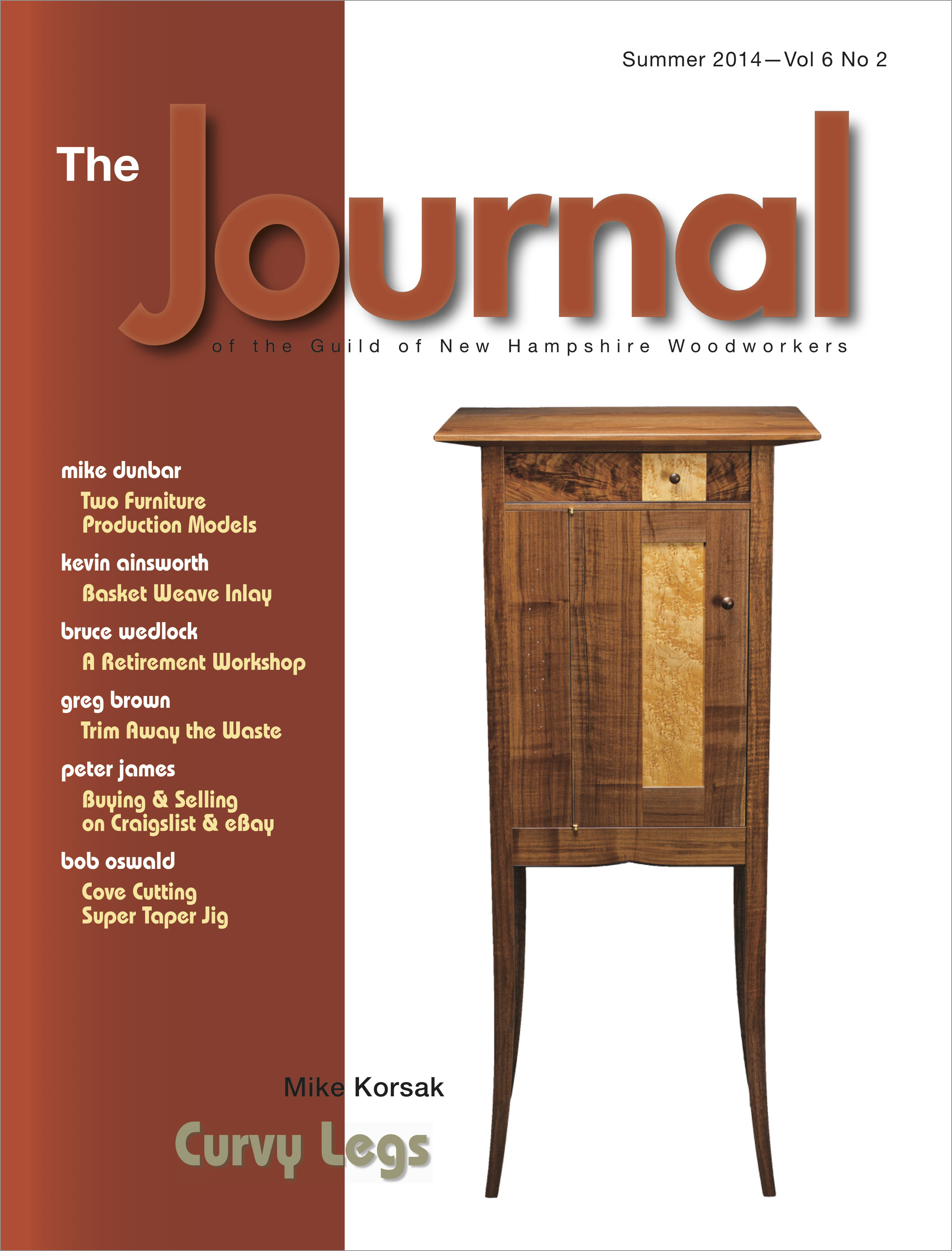This piece is named Negotiated Peace (Formerly Echo & Narcissus). It started out as just a cabinet and mirror, and then I got frustrated and made some slight modifications...with arrows.
A Visit With...Gam Glams
Details of one of my pieces from a few years ago: Gam Glams.
Why Are There Arrows Sticking Out of This Cabinet?
You may recall a curvy two-piece ensemble that I debuted in late 2014, named Echo and Narcissus. In early 2015, after some frustration with certain aspects of the wall cabinet, Echo, I was inspired to make some changes to the cabinet that expressed that frustration. The image at left clearly describes those changes. For anyone interested in more specifics about how the new piece was actually made, the recipe (or as much of it as I'm willing to reveal) is as follows:
(1) finely crafted and detailed cabinet and mirror ensemble
frustration, a healthy pinch
(3) handmade arrows w/ broadheads
(1) longbow
a drill press
I'm calling the new piece Negotiated Peace (formerly Echo & Narcissus). For more images, visit my Gallery page.
The decision to change the piece was not an easy one. I debated with myself for days, stressed, didn't sleep. The thought of potentially destroying something I had created was scary, but so very intriguing. In the end, that inner voice won out, the one that kept saying "you know I'm right, quit fooling yourself and do it." The funny thing about that voice: it's always right.
Echo and Narcissus
I recently completed this mirror and wall cabinet, named Echo and Narcissus. They are made of black walnut and Douglas-Fir and both feature curved elements.
The front face and doors of the wall cabinet, Echo, are curved. I made the curved doors by gluing up a 5-layer core of shop-sawn veneers over a curved form, alternating the grain direction of each ply. Then I pressed decorative Douglas-Fir veneers onto the outside and inside faces of each door.
The mirror, Narcissus, has a curved "crown" with decorative Douglas-Fir veneer. The process for this crown was slightly different. Using the same curved form, I glued up a 5-layer core of shop sawn veneers. Because the crown would be contained somewhat by the black walnut above and below, I didn't alternate the grain direction of the plies. Once the core was laid up, I pressed the decorative Douglas-Fir face veneer to the outside face.
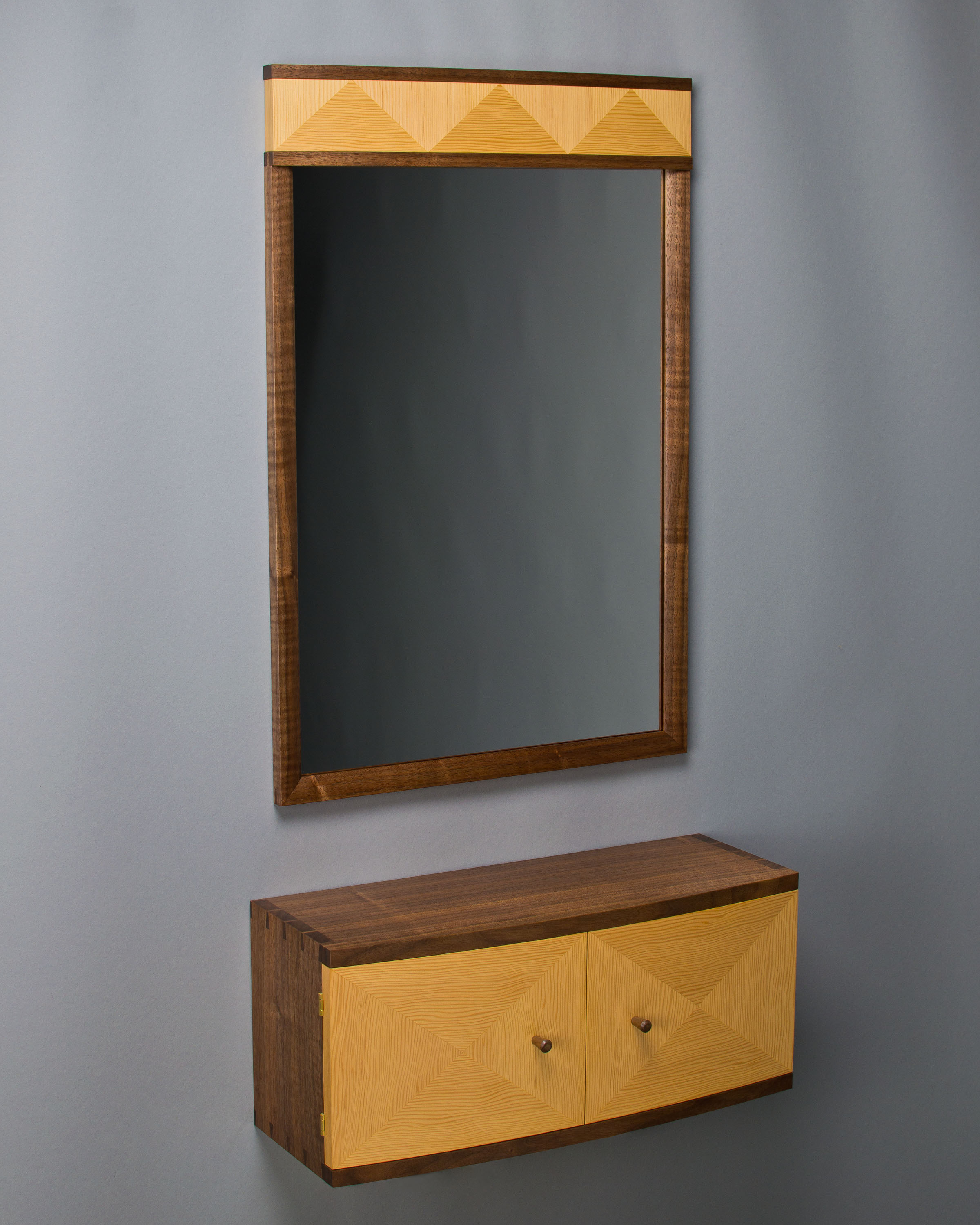
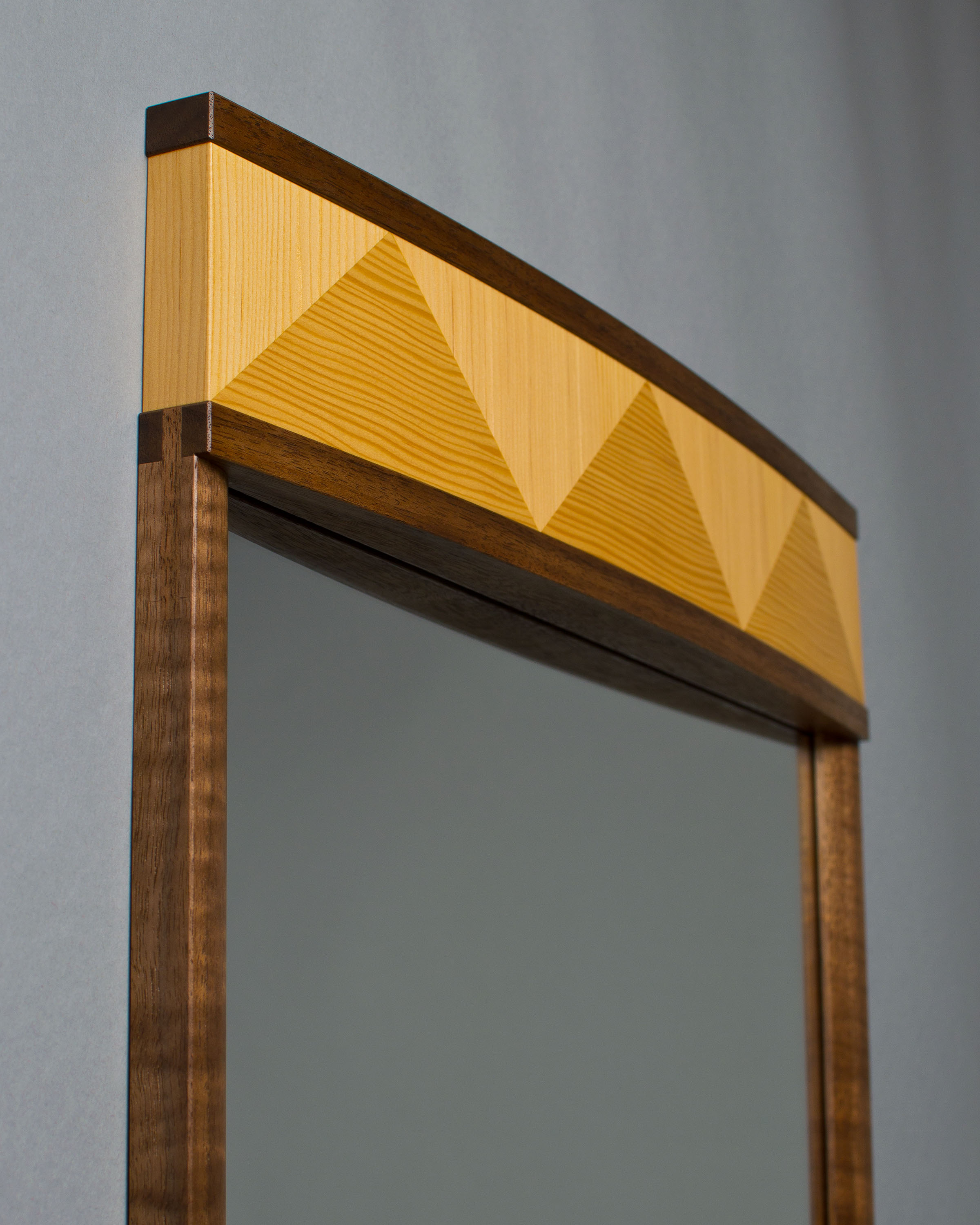
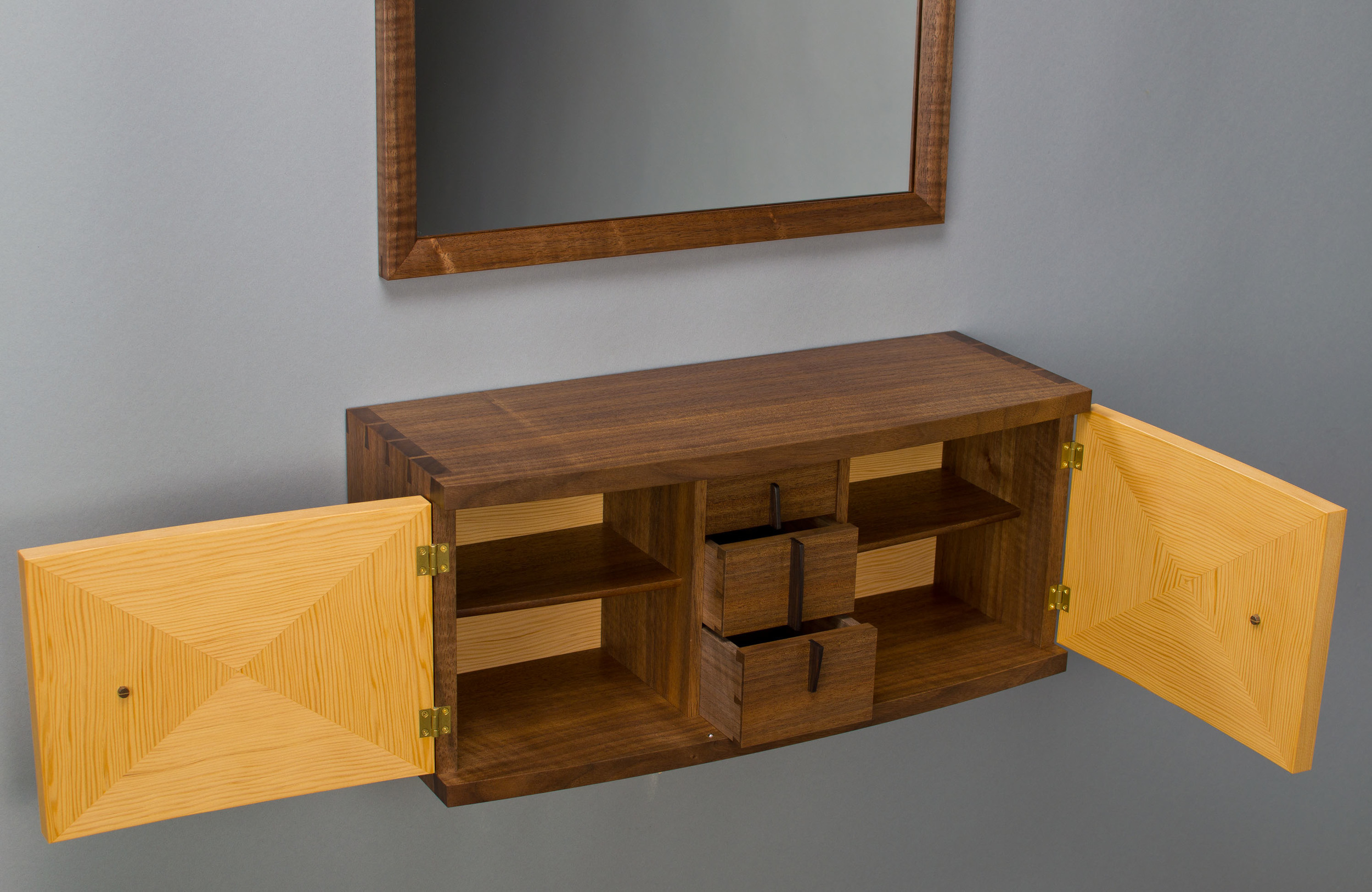
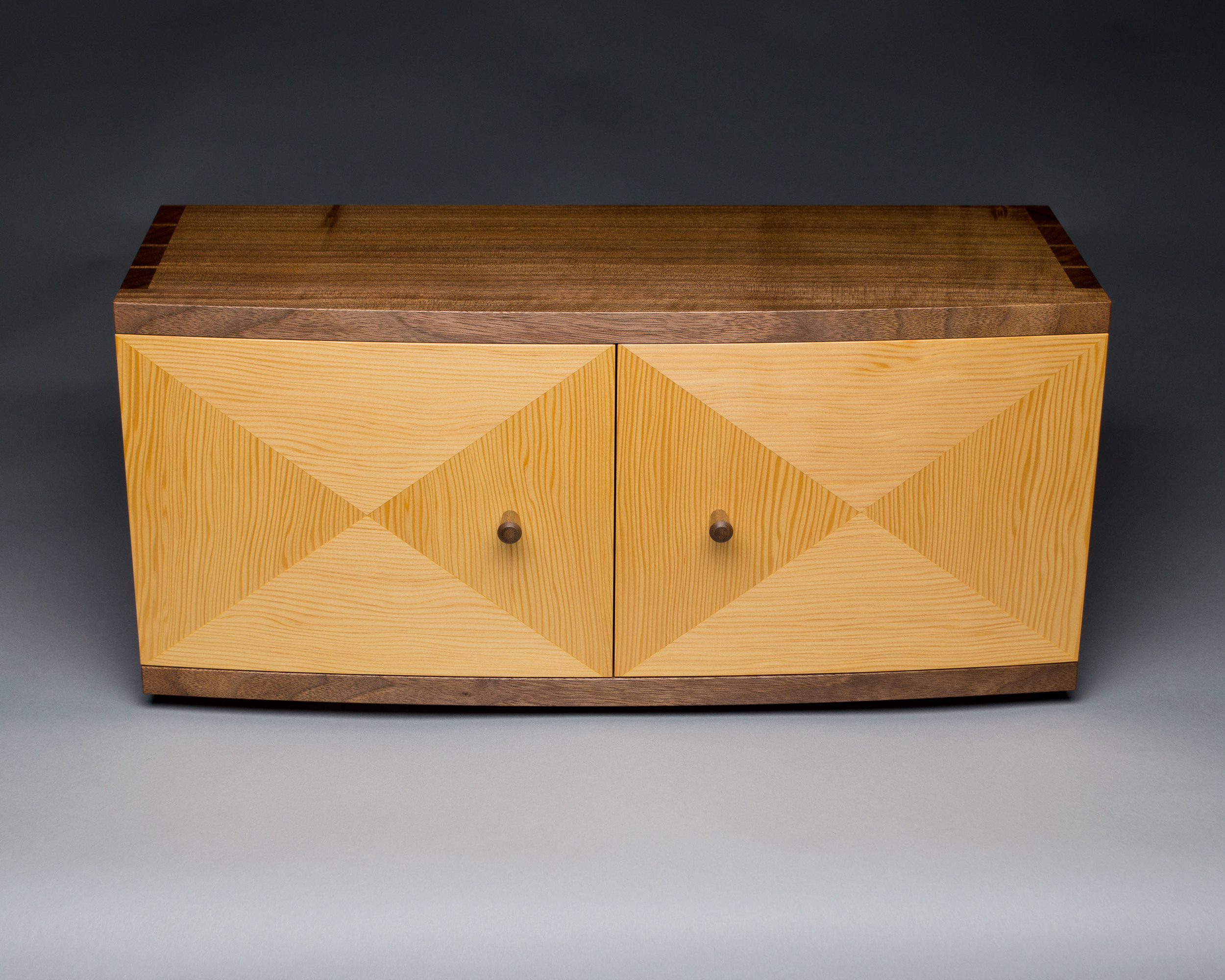
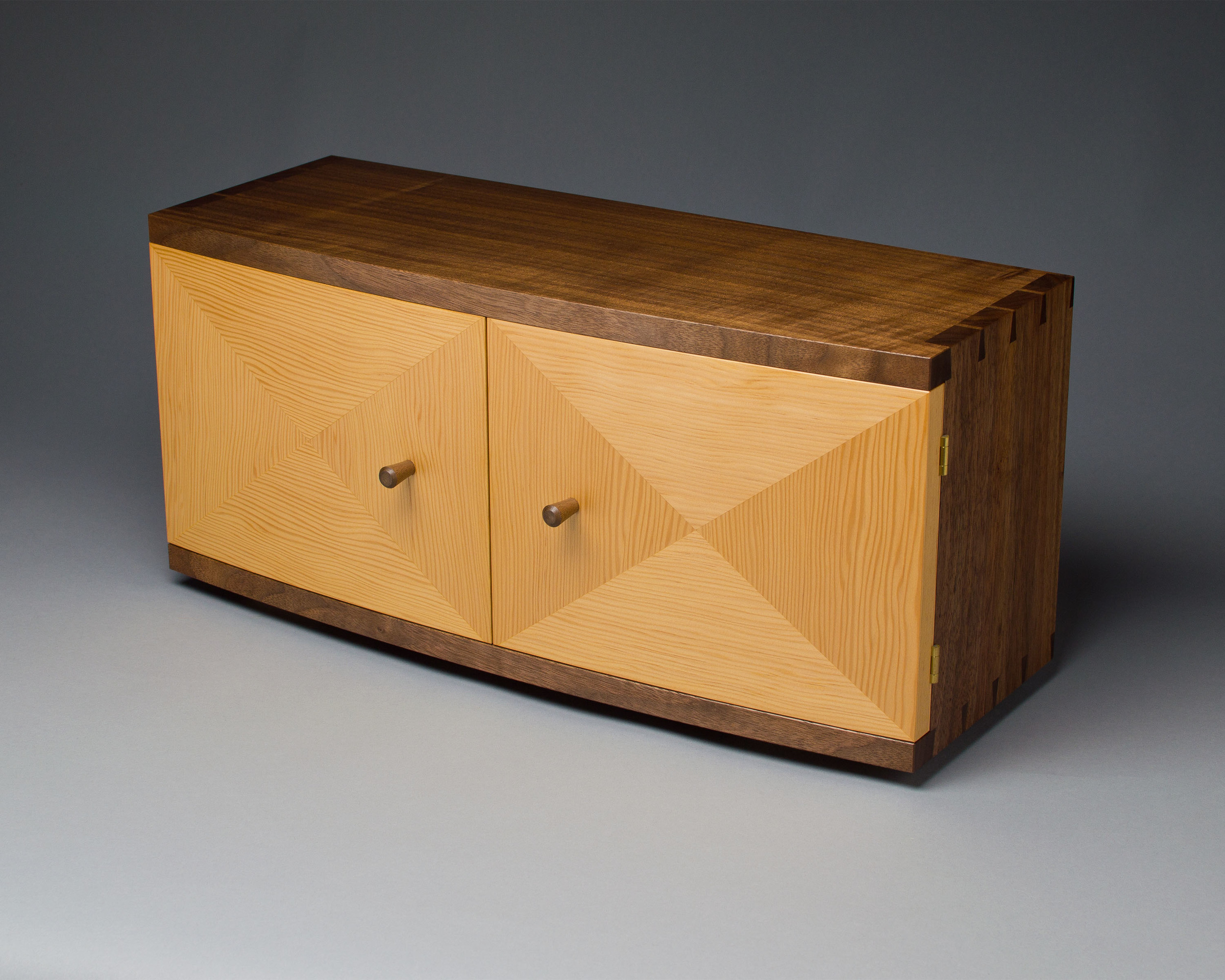
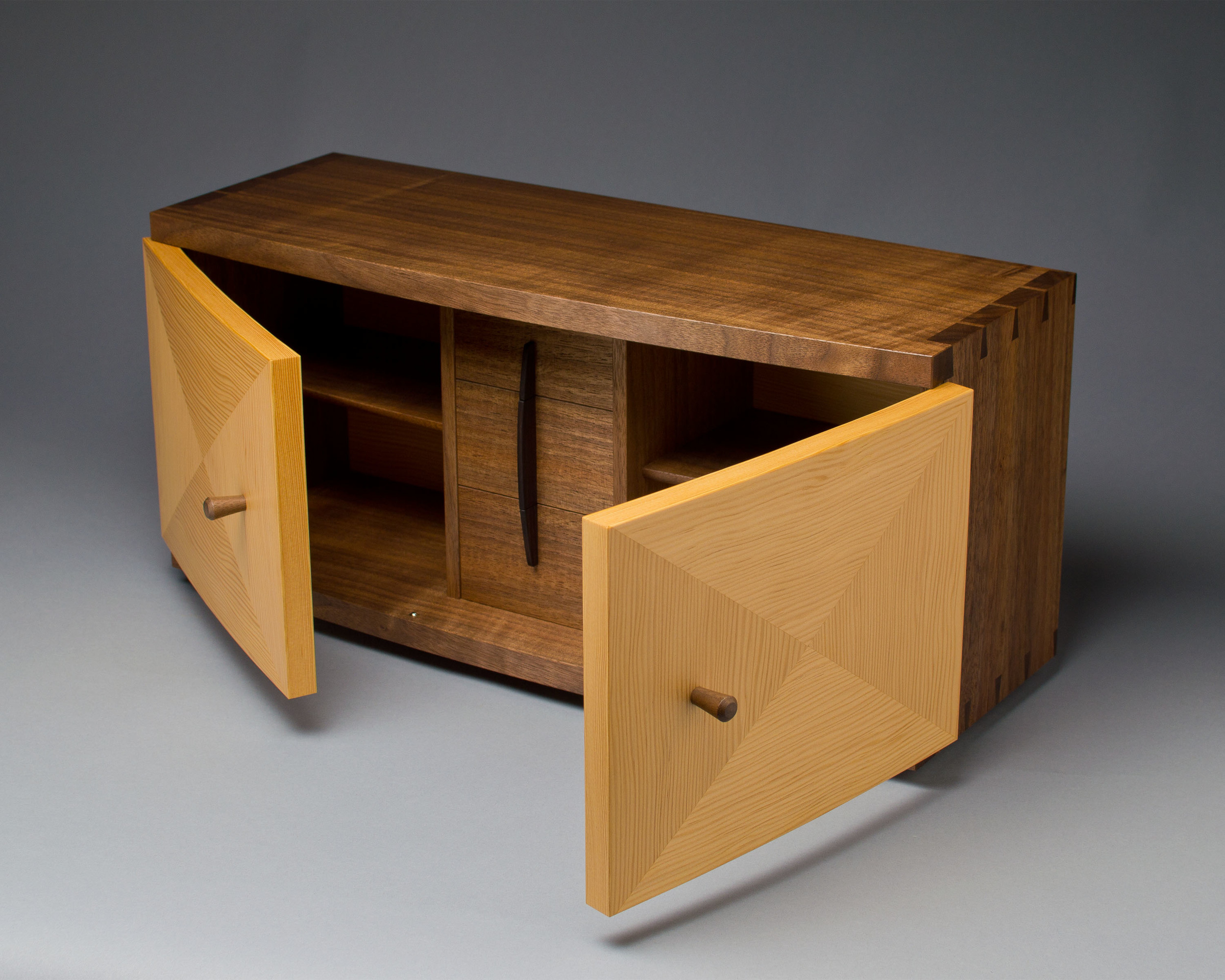
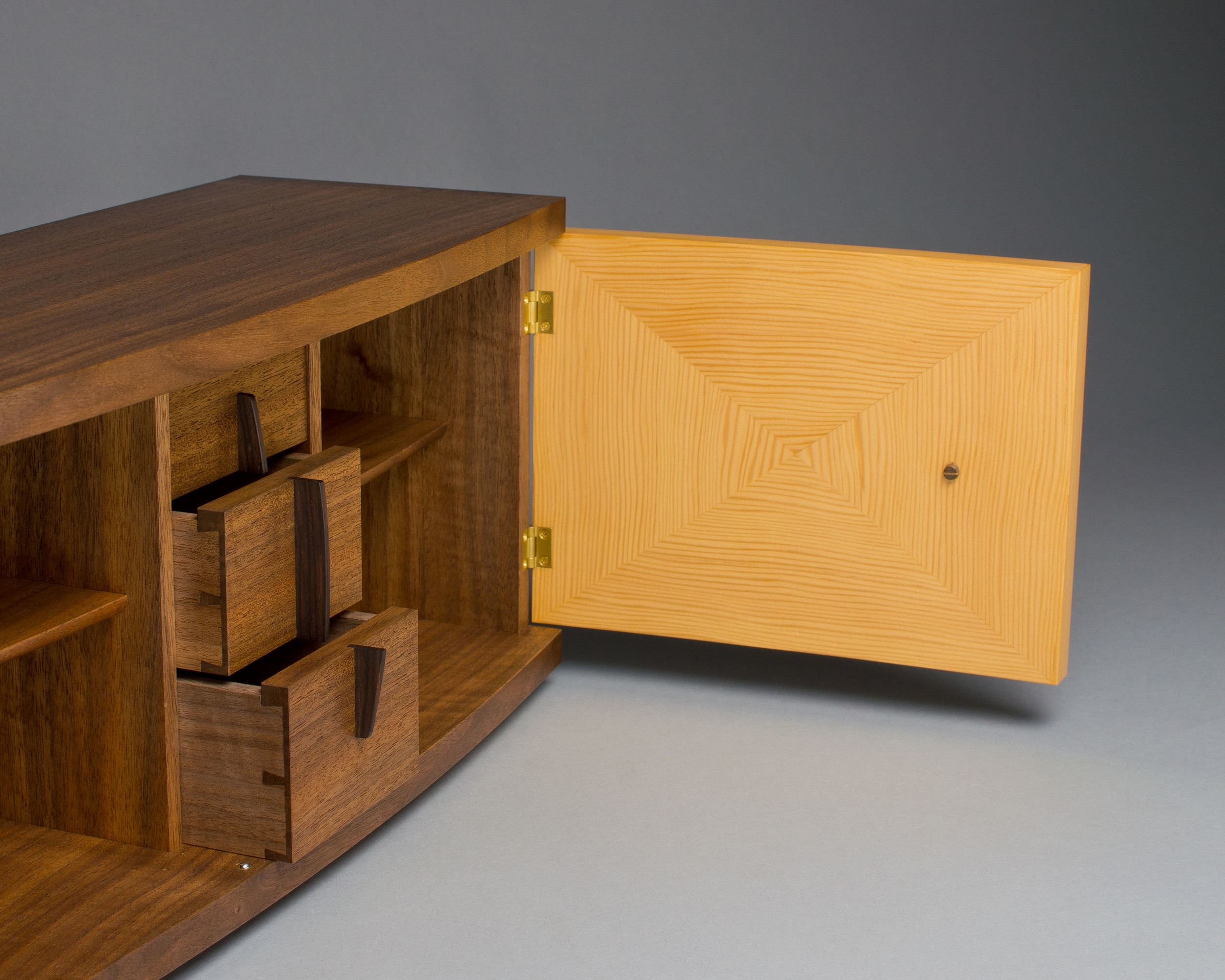
New Article by Mike Korsak
Earlier this spring I wrote an article about how I shaped the curved legs for my Walnut Cabinet. The article was published in The Journal of the Guild of New Hampshire Woodworkers and is available to view by clicking on the image at right.
In the article, I describe the entire process of making the curved legs, from design to final shaping.
Why did I design this piece with curved legs? Because the curves lend a nice bit of elegance and refinement. And it's another way to add a level of individuality and personality to my work. Breaking out of the rectilinear and into more curvaceous forms is important to me as a furniture maker. I hope the article provides insight into the process.
Happy reading!
